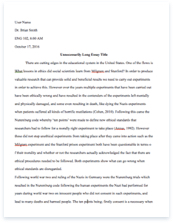Supply and Demand Persuasive

- Pages: 4
- Word count: 862
- Category:
A limited time offer! Get a custom sample essay written according to your requirements urgent 3h delivery guaranteed
Order NowSupply and demand are the starting point of all economic investigation. It is important to be able to level the two. Supply is the different qualities that a producer will make available to the market at different prices. Demand Is the various quantities that a consumer Is willing to buy at various prices. There are several reasons demand changes such as; income, preference, taste, changes and expectations In future pricing. The factors that affect supply would be prices and profit. Firms are profit motivated which can determine supply.
In this assignment I will explain what happens to demand, supply, price and quantity demand with a few examples. A scientific study shows that coffee contains some antioxidants. Antioxidants are widely used in dietary supplements and have been tested for the prevention of diseases such as cancer. This makes antioxidants a good that people want, which will increase the quantity demand for coffee. If we made assumptions and placed these assumptions on a model graph, we would get the demand curve. Lets name the price “Pl” and the demand quantity “QI”.
If the price and quantity demand increase this does not affect the demand curve since “Pl” and “QI” are already apart of the demand curve. Anything that affects the buying decision, other than the product price, will shift the demand curve. Eventually the price of coffee will increase. If the price ot cottee increases, this will lower the willingness to purchase the beverage. when the price rises, a consumer cannot afford to buy the product as often. Price changes affect the purchasing power. “The demand for some goods Increases, while the demand for others decreases.
The supply of some goods rises, while the supply of others falls. As such events unfold; prices adjust to keep markets in balance. ” (cite book) A prolonged drought in another country reduces Its production of coffee beans. At the original price a shortage of coffee beans now exists and the market is no longer in equilibrium. Equilibrium is the point at which supply and demand intersect on the demand graph. The shortage causes a rise in price and a fall in quantity demand, and an upward movement along the demand curve.
When the supply of a good decreases: the equilibrium price of the good rises and the equilibrium quantity of the good fall. In economics there are substitutes and compliments. A complementary good is a good with a negative cross elasticity of demand. These are goods that are used together. Substitutes are goods that can be used to replace one another. A goods demand is increased with the price of another good decrease. Donuts and coffee are compliments. It the price ot donuts increases, the quantity demand tor coffee will decrease.
This will result In a leftward movement on the demand curve for donuts and cause the demand curve for coffee to shift Inward. The demand curve Is the entire relationship to quantity demand. Less of each good Is demanded. On the other hand coffee and tea are substitutes. If the price of tea rises, the demand for coffee ill Increase, and if the price of tea falls, the demand for coffee will decrease. In order to protect growers to have better working conditions for workers, a price floor is implemented. A price floor is a government limit on how low a price can be charged for a product.
The price floor must be greater than the equilibrium price in order to be effective. If the supplier has to pay out more in labor, the quantity demand will decrease. When the quantity demand decreases; the price of the good will increase. If consumers want less of the product, even when the price remains the same, this can affect the demand curve. If the price of the goods increases, this could possibly lead consumers to find a substitute for coffee. Economists measure responsiveness by elasticity. This is the ratio of the percentage change in a dependent variable to a percentage change in an independent variable.
A good is considered to be elastic if a slight change in price leads to a sharp change in the supply or quantity demanded. Usually these kinds of products are readily available and a person may not necessarily need them in their daily life. Inelastic is where changes in price witness only slight changes in the quantity demanded or supplied, if any at all. These goods tend to be things that are more of a necessity to the consumer in his or her daily life. The more necessary a good is, the lower the elasticity, as people will want to buy it no matter the price.
Consider, for example, Mr. Dash drinks two cups of coffee everyday no matter what the price is. Coffee is a necessity for Mr. Dash. Therefore, demand for coffee will not change much in response to the price changes. Coffee, which could be a luxury good, has become a normal good for Mr. Dash. Coffee would be an inelastic good. If we assume Meagan’s Coffee Shop increases the price of their coffee by 30%, the quantity demand would reduce by 10%. We can make a demand schedule to show the changes in price and quantity demand.










